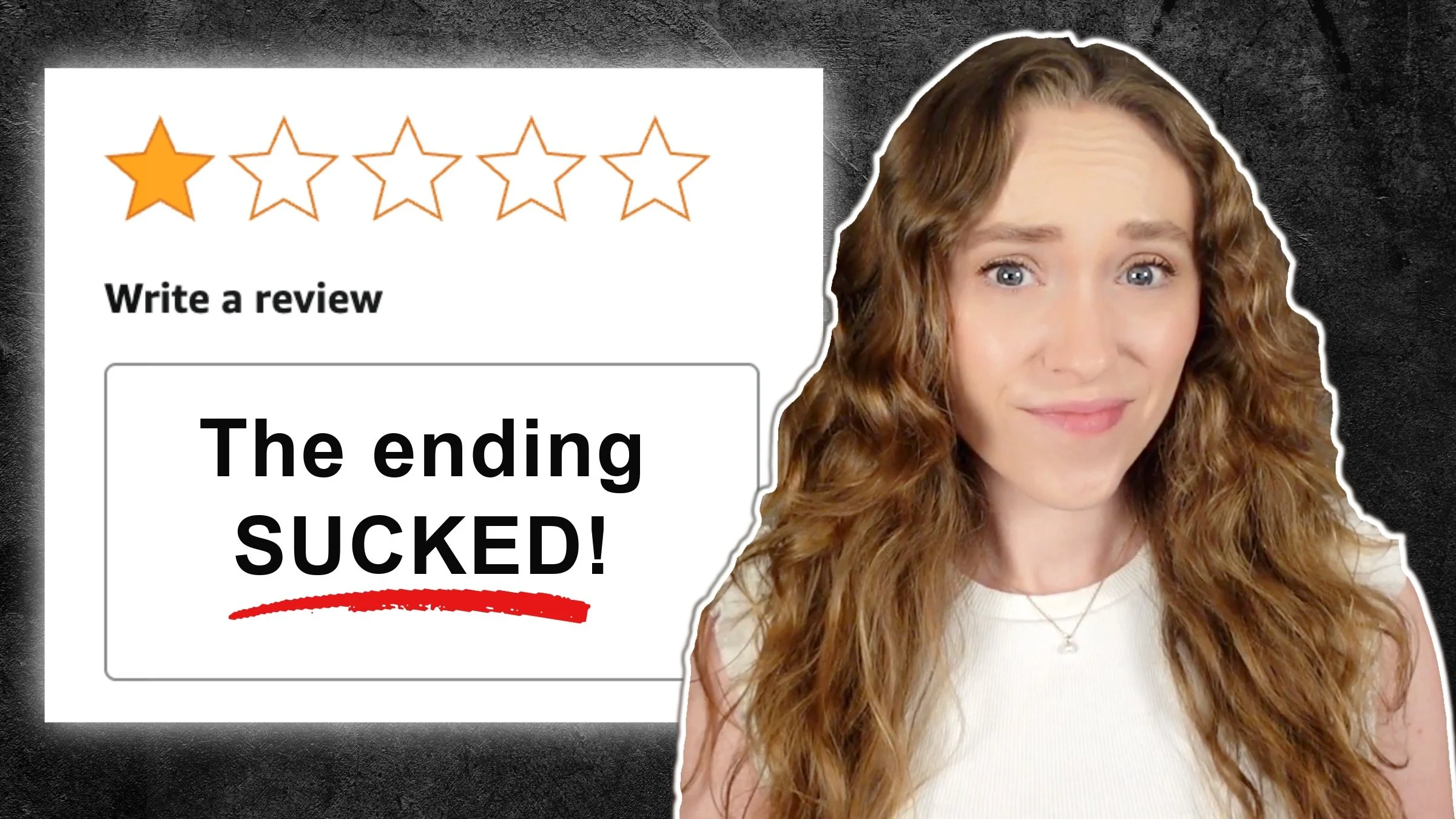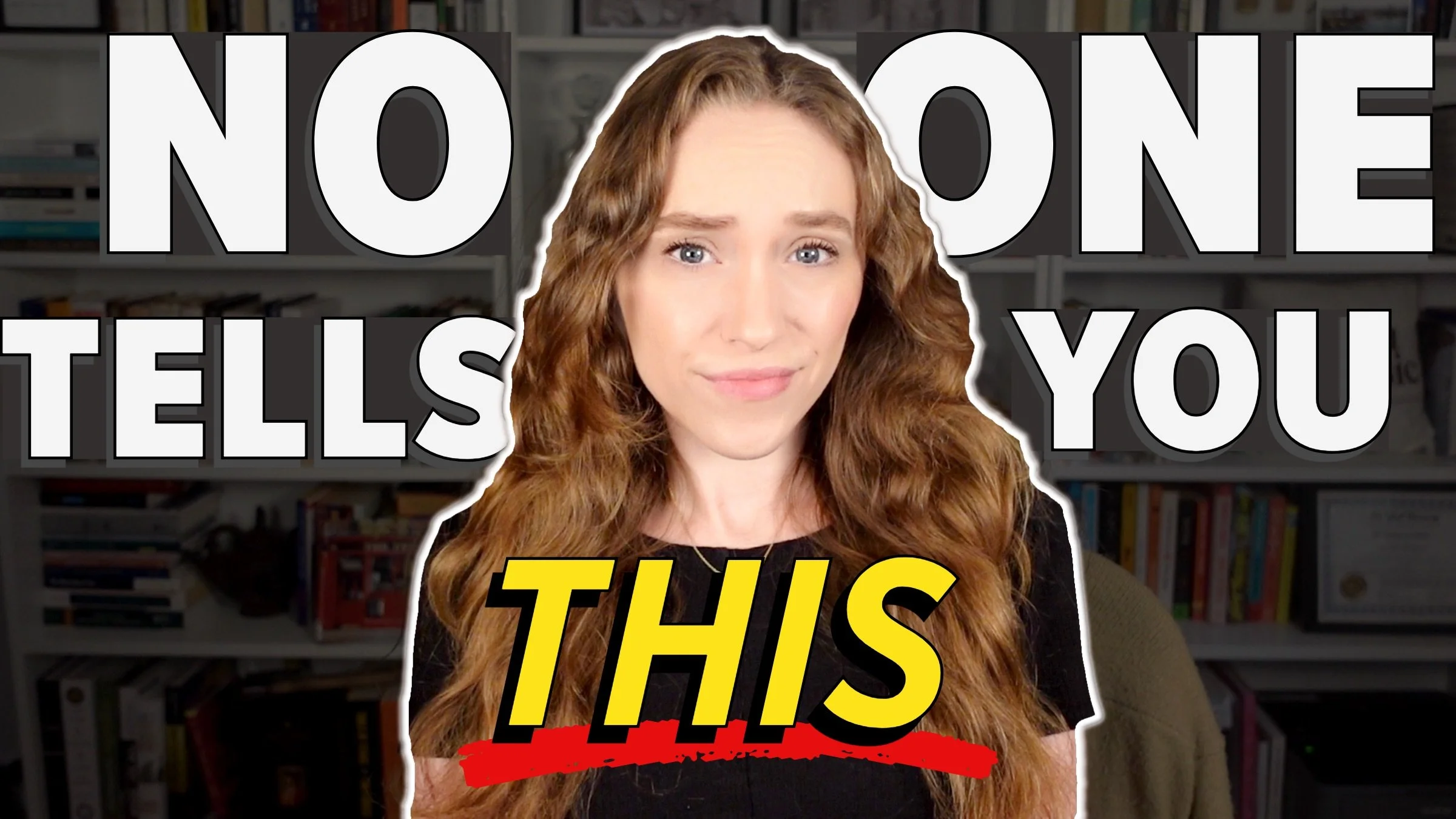How to Shorten Your Novel by Killing Your Darlings
HIT PLAY OR READ THE POST BELOW:
One of the absolute toughest parts of the novel writing process is shortening the word count. When self-editing or self-revising, it can be difficult to see which scenes in your book are not serving the broader storyline and should be cut. After all, you wrote those scenes for a reason, so you might be attached to them.
I’m going to point out some unimportant scenes and show you how to shorten your novel and lower the word count by removing them. I promise that cutting any of these scenes will likely have no negative impact on your story, so don't be afraid!
Why Cut Scenes at All?
I want to begin with a quick discussion of why it’s important to learn how to shorten your novel. In many cases, it ultimately improves the novel's pacing. By not having extra fluff that doesn't move the plot forward, the story is going to have a better cadence. It will progress much more smoothly and ultimately deliver a better experience for the reader.
The second reason is it keeps the focus on the main storyline. Often these extraneous scenes will divert the reader's attention to something else that, in the end, doesn't matter. In general, you don’t want the reader to be distracted. You want them to keep a laser focus on the progression of the main storyline.
Lastly, cutting those extra scenes discourages skimming. If a reader reaches a scene and can sense it's not going anywhere, they are likely going to skim it. No writer wants to hear that their book was skimmed by the reader, so cutting out what’s unnecessary ensures that every scene is purposeful and engaging.
So let's dive into easy scenes to cut from your novel that will help you shorten your novel overall!
Travel Scenes
The first scenes I want you to cut from your novel are any where the characters are en route. This could be them driving a car, taking a bus, or going in an airplane to some type of destination. In the vast majority of cases, you can just skip over a transit scene and immediately cut to the characters arriving at that destination.
Think about the last time you were on a long plane or car ride. It was probably stagnant and kind of boring, and if it's stagnant and boring in real life, it is likely not worth putting on the page. These transit scenes often read like filler that delays the next event from happening, so it would be more efficient to cut the scene out and just get to their arrival.
Now, the one exception here is if something dynamic and important actually happens while the characters are in transit. In that case, of course you should keep the scene.
But if nothing significant happens, even if there is a pertinent conversation in the transit scene, just move it to when they arrive at their destination. After all, why does the conversation have to be on the plane or on the train? If there isn’t a crucial reason for it, just move it and cut that scene.
Vague Dream Sequences
The next scene I want you to cut from your novel is any vague dream sequence. This is a personal pet peeve of mine, as I find that dream sequences in novels often come off as vague and disorienting. They don't do anything for me as the reader.
Now, you as the writer probably have some significance associated with the dream. You understand what it signifies metaphorically. But your reader probably isn't going to pick up on those things unless you make them obvious, which then defeats the purpose of a dream sequence.
Remember, your reader is not likely to go back to the dream sequence after the closing events of the novel to fully unpack what it meant. In the reading experience, those scenes just take our attention away from the main storyline.
They also kill any sense of suspense or tension you have created. You have spent chapters building up action and urgency, only to take the reader away from it to show a slow, literally dreamy sequence. These scenes can interrupt the pacing and, again, hurt the reader's experience.
Overly Long Sex Scenes
The next scene you can cut from your novel is any overly long sex scene, unless you're writing erotica, of course.
Less is more with these scenes, because too many visual or graphic details can feel uncomfortable and distracting to read. Too many details can become very unsexy quickly, diminishing the point you're trying to convey. Plus, in the vast majority of cases, those sexy details have no bearing on the rest of the plot.
What I recommend doing is teasing the acts of intimacy between the characters and then cutting the scene early so that the reader can then imagine what happens. They will fill in the blanks for themselves and that will ultimately make for a better reader experience than you detailing every sexual act from beginning to end.
Small Talk and Banter
The next scene you want to cut from your novel is any small talk or banter between the characters. Small talk is painful in real life for many, and it can also be painful to read.
Maybe you have two characters meeting up for coffee and they talk about the weather before getting into the meat of their conversation. While it’s realistic for you to portray that small talk, it is ultimately filler. Cutting it out will have no impact on the story’s plot overall.
Banter works the same way. You can establish two characters’ dynamics with just a few lines of dialogue. You don't need to show pages and pages of flirtatious banter to establish that these characters are romantically interested in each other. Just give a bit and stop, because banter can also get tiring to read.
Cutting down these dialogue exchanges will tighten up the scenes and help the reader focus on what is actually important in the conversations. Only in rare cases is the small talk or the banter the main takeaway of the conversation, so paring it down will only help shorten your novel.
Static Setting Descriptions
The last scene you want to cut from your novel are any static setting descriptions. These are setting descriptions that are more like passages than scenes.
A good way to think of scenes is to think of play. In a play, the audience watches the actors move about on the stage. Rarely will there be a scene where there is no one on stage, just the audience viewing the backdrop.
Just like on a stage, your novel’s static setting descriptions are ultimately anticlimactic. There is no action and no characters.
This can happen when you are describing what a home or neighborhood looks like, or when you’re world building and explaining the rules of your world to the reader. This is a particularly common issue in sci-fi or fantasy genres.
Your novel should be a series of active, dynamic scenes where the characters are doing things, and setting descriptions should be integrated in those scenes. Try to avoid stepping out of any scene for a long period of time to describe the background, because that can be boring to read. Again, you run the risk of the reader skimming through and missing the details you're trying to convey.
The reader should learn about the details of the setting in the context of the character's experience of that setting, so aim to ground every scene and every passage in some kind of action around a character. It doesn't have to be a huge action scene; it can be something small and nuanced. Always remember to connect us back to the character, because long passages of setting description just aren't effective on their own.
I hope these tips show you how to shorten your novel and help you “kill your darlings” in the interest of creating a stronger, more dynamic, and more engaging story.
Remember, you can keep these extra scenes in a special folder reserved for axed passages from any of your stories. Maybe they’ll find a new home repurposed in a future story!
While editing should be ruthless, writing should be fun. So if you’re having fun writing these kinds of passages, continue to do so! But also get ready to set those passages aside if they do not serve the story overall.
Thanks so much for reading and happy writing!





